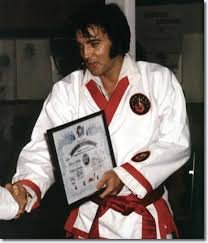Go Barefoot: The Yin and yang of tai chi shoes
Footwear is always a contentious issue in the martial arts: to go with trainers, socks, boots, deck shoes or forget it all and go the traditional barefoot route? Well, there is at last a third way, a blend of both shoe and barefoot practices.
I recall the first day I stepped into a Tai Chi class. It was around the mid-1980s and the instructor wore a Kung-fu jacket, black with long sleeves and white cuffs, baggy black trousers and those little black cotton soft sole shoes. worn by Bruce Lee in Enter the dragon.
Such clothing looked great on him, but the way Westerners adopted the gear to orientalise their practises, made me feel uncomfortable and just a tad silly.
40 years on, and having taught the art for the last 30, I still choose not to wear a uniform. I vowed to detach myself from such traditional methods for conveying skills via the colour of a belt, a sash, a sewn symbol onto a pocket or the carrying around of a certificate. Skills, I believed, surely came via the work you put in, practice, patience, contemplation and above all your teaching abilities. What had it to do with uniforms? Maybe it was just my Suspicious Mind, but were we all just caught in a trap? I kept seeing flashes of Elvis, certificates sweaty foreheads flick across my mind.
So I decided early on, there would be no uniforms in my classes. And while I was at it, no jargon, no slogans, no titles, no gradings, and no “masters”.
The Question of Footwear
But, I’ll admit, I was a sucker for those little cotton shoes. Trainers and boots were no good, as though they gave support they deadened sensations for grounding and rooting, with soles so thick. It was impossible to truly sense the subtle weight distribution in the sole of the foot and the ability to - at a snails-pace - weight shift from one leg to another in footwear like this.
So though I wore jeans and a t-shirt in class, I found myself nipping into London’s Chinatown to purchase my own thin black cotton slip-on shoes (Bruce Lee - enter the Dragon style).
But not everyone had them, so those without trained in bare feet or socks. Sadly, rented dusty community halls, left discarded drawing pins, beer stains or remnants of chewing gum on the floor, finally persuading me to reconsider the question of shoes again.
The answer was, a compromise, opting for a mix of deck shoes, thick socks and floor cleaning.
That was until more react times, when, recommended by another tai chi friend, I was introduced to barefoot shoes. And, well, this is where the story begins.
Barefoot Shoes
Purchased online for a reasonable £35, they are an hopeful response to my eternal dilemma about Tai chi footwear. They are lightweight, colourful, comfortable, have a broad design, and so do no crunch up your toes and have a delicious, very, thin sole.
In fact I’d say that they take me back to those cotton shoes once more. Only this time, there is an absence of orientalism. Initially they take some adjusting, walking out into the street, you feel as though you have forgotten to put your shoes on. This is especially acute when you step on a stone, but, and I may be deluding myself here, there is a difference. The uncomfortableness is not pain so much as an awareness that you have stepped on something uneven. And this “awareness of walking and stepping” is what I am after.
Walking along the pavement, the impact of your steps are felt, and so your awareness of what your are walking on and how you are walking is never far from your consciousness.
This, you may think, is hardly what you would desire in a pair of street shoes, and you may have a point. But, for Tai Chi, I would argue this is precisely what you need.
The shoes are mindful reminders of where you put your weight as you place a foot down on the ground, how you land, and which part of the foot takes the bulk of the impact. This has consequences for knee alignment, hips and lower back.
All these we try to learn in tai chi, and often our choice of footwear hinders this lesson. Not so, with barefoot shoes.
Would I run marathon in them? Probably not, but then I probably wouldn’t run a marathon, full stop. Do I think they are the answer to the age old question of how to practice tai chi without resorting to the appropriation of another’s country’s wardrobe? Well, I don’t know for sure, but certainly these lightweight shoes open up the debate.
What’s on Your Feet?
What do you think? Are you into plimsols or Nike trainers? Do you practice in naked bare feet with an incense stick over your ear, or do you wear Doc Martins, have a Lao Tzu tattoo on your buttock and a snarl around your lips? What is your preferred footwear and why? Let me know and leave a comment below.




